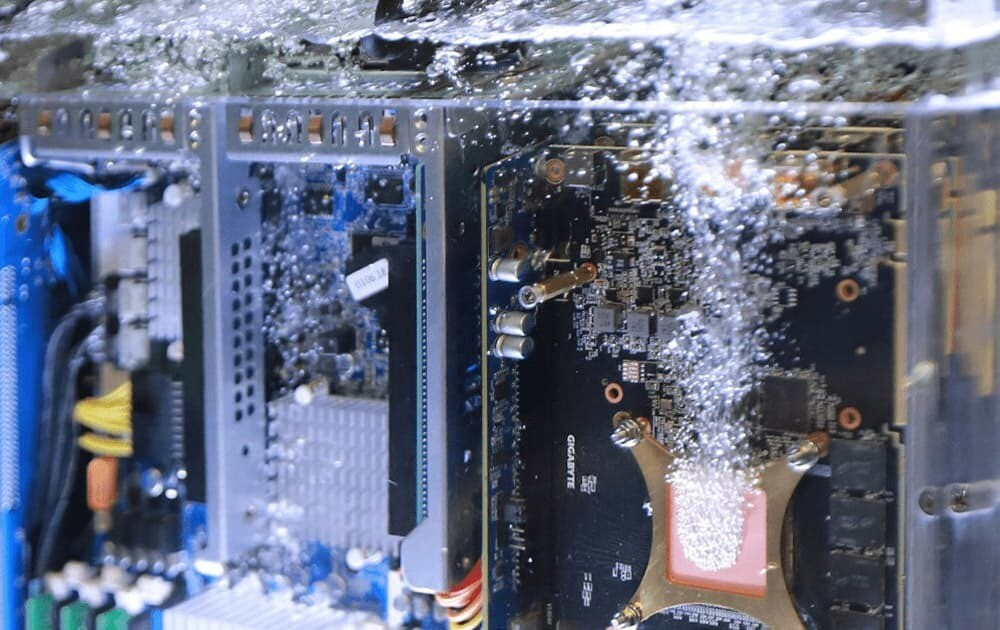Immersion Cooling
Immersion cooling is also called liquid submersion cooling, it is the method of submerging computer components or full servers in a thermally, but not electrically, conductive liquid.
This innovative way of cooling IT hardware or servers doesn’t require fans and the heat exchange between the warm coolant and cool water circuit usually occurs through a heat exchanger i.e. a heater core or radiator.

Some extreme-density supercomputers, such as the Cray-2 and Cray T90, use large liquid-to-chilled heat exchangers for heat removal. In this case, the fluid used must have sufficiently low electrical conductivity so as not to interfere with the normal operation of the computer. If the fluid is somewhat electrically conductive, it may be necessary to insulate certain parts of components susceptible to electromagnetic interference, such as the CPU. For these reasons, dielectric fluid is preferred.
Is Immersion Cooling the Same as Water Cooling?
In water cooling, the liquid is potentially harmful to electronics and thus flows through a sealed loop isolated from the heat source. A watertight water block is used to indirectly transfer the heat from the heat source to the working fluid.
In immersion cooling, however, heat is transferred directly away from the heat source using the working fluid. With immersion cooling, the working fluid must be non-conductive, which tend to be within four families of fluids:
de-ionized water
mineral oil
fluorocarbon-based fluids
synthetic fluids
A wide variety of fluids exist for the purpose of immersion cooling, with the most suitable being transformer oils and other electrical cooling oils. Non-purpose oils, including cooking, motor, and silicone oils have also been successfully used to cool computer servers.
There are two types of Immersion Cooling, one is Single-Phase Immersion Cooling, it doesn’t boil nor freeze and always remains in its liquid form. The coolant is pumped into a heat exchanger where the heat is then transferred to a cooler water circuit. Another one is Two-Phase Immersion Cooling, the working fluid can exist in either a liquid or gas state. This method takes advantage of a concept known as latent heat, where thermal energy is required to change the state of a fluid. The working fluid is cooled when it reaches its boiling point and will remain at this saturation temperature.
 中文
中文



.png) Search
Search


 >
>  Return to List
Return to List